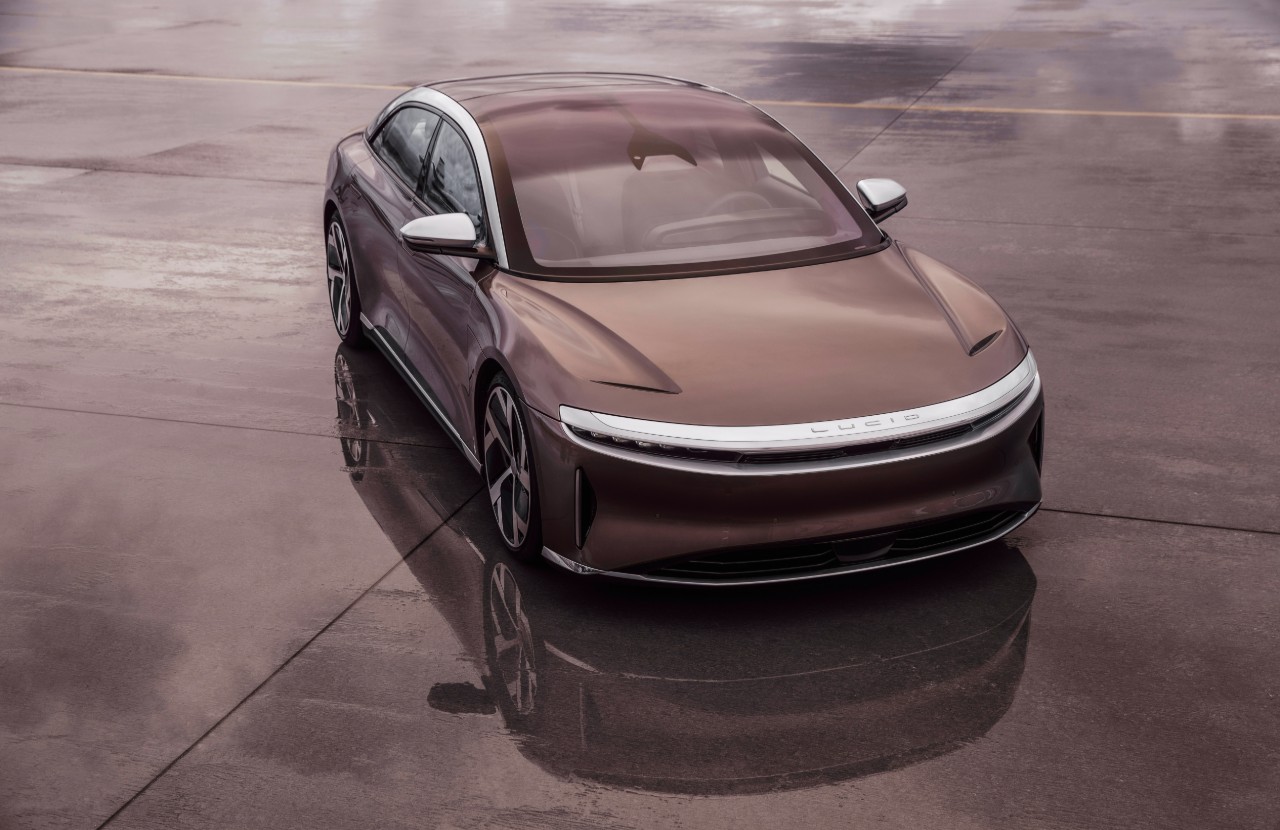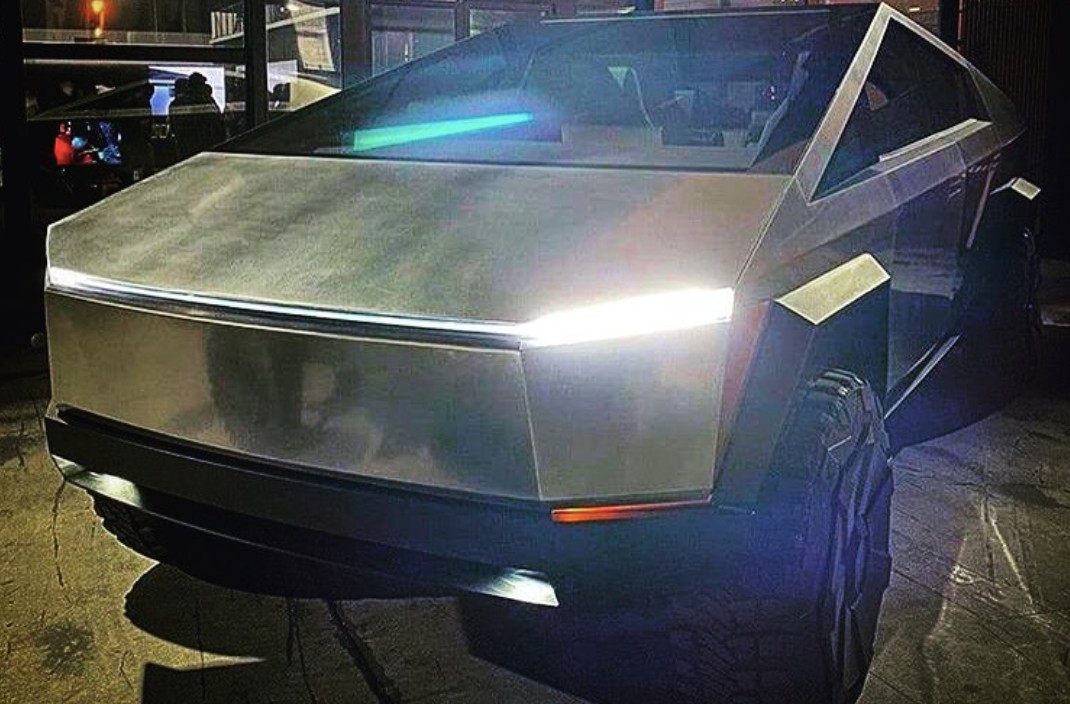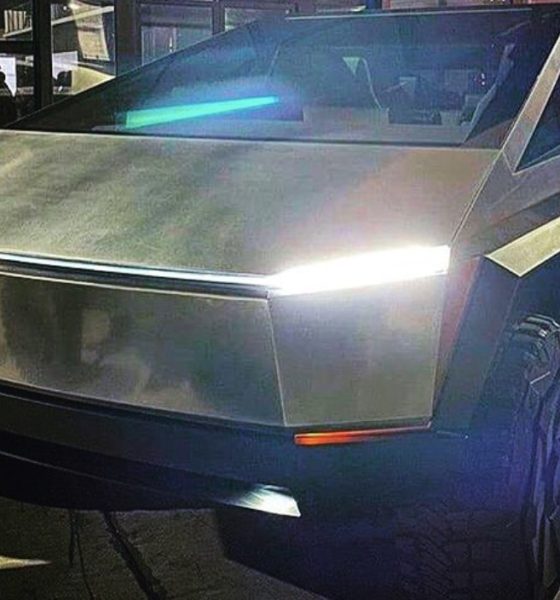Lucid hosted an impressive unveiling event of the Air on September 9th, showing the vehicle’s four different configurations and the remarkable performance specifications of the Dream Edition. With 517 miles of range and some of the fastest acceleration rates ever seen on an electric vehicle, the EV community widely speculated on how Tesla would manage to compete with Lucid’s newly-introduced technology and speed, and the Cybertruck seems to fit the bill.
The Cybertruck from Tesla would match Lucid’s range and performance specifications, while also offering versatility for tasks such as construction and camping. The Lucid Air Dream Edition also doesn’t have something that the Cybertruck does: affordability.
The Tesla Cybertruck Tri-Motor variant starts at $69,990 while offering 500+ miles of range and 0-60 times that are under 2.9 seconds. To obtain a Dream Edition Air, consumers will pay $100,000 more.

The consumer base of the two vehicles will likely be vastly different. The Cybertruck’s affordability across its three variants will prove to be a bigger seller, especially considering the truck has an estimated 500,000+ pre-orders ahead of its planned initial production phase.
Lucid will attract luxury car buyers across all of their variants for the Air. Its high-quality interior, executive rear seats, high-tech features, and sleek sedan design all make for a perfect car for those who are willing to spend a little extra.
But the Cybertruck’s tech shows one thing, and it is the fact that Tesla is capable of competing with Lucid in terms of range and performance.
On top of that, Tesla’s timeframe for the production of the Cybertruck was moved up to May 2021, which is around the same time that Lucid plans to begin deliveries of the Air’s Dream Edition.
A few months ago, Teslarati reported that Elon Musk has a tendency to announce big developments as other automakers are gaining momentum. When Nikola started to see traction with its Semi trucks, Musk announced that the Tesla Semi would begin “volume production” in a timely fashion.
- Credit: Twitter | @zfescht
- The Tesla Semi visits Yandell Truckaway. (Photo: Arash Malek)
The Cybertruck also pulled wind from the sails of Rivian, who had planned to introduce the first fully-electric pickup to the market with the R1T. However, the Cybertruck took over a massive amount of the appeal because of its unique design and sci-fi event, which captured the attention of millions.
In the grand scheme of things, Tesla has the Cybertruck, and it plans to offer it in the U.S. market where the pickup is widely popular. It is more affordable, offers impressive range ratings that are comparable with the Air, and has excellent performance. It is sure to capture a broad consumer group because of its specifications.
Meanwhile, the Air will appeal to luxury sedan buyers, who are not necessarily worried about performance. These buyers look for exclusivity, brand prestige, build quality, and a high-end consumer experience, according to Limelight. Lucid will be able to offer all of these things apart from prestige, simply because of its startup label. However, electromobility will appeal to some high-end car buyers, and the Air could be the answer to those needs.
Although the Cybertruck and Air are two different cars completely, Tesla is proving outright that it is capable of creating a truck that has versatility and a useful platform, while offering comparable performance and range specifications for significantly less money.

News
Tesla FSD fleet is nearing 7 billion total miles, including 2.5 billion city miles
As can be seen on Tesla’s official FSD webpage, vehicles equipped with the system have now navigated over 6.99 billion miles.

Tesla’s Full Self-Driving (Supervised) fleet is closing in on almost 7 billion total miles driven, as per data posted by the company on its official FSD webpage.
These figures hint at the massive scale of data fueling Tesla’s rapid FSD improvements, which have been quite notable as of late.
FSD mileage milestones
As can be seen on Tesla’s official FSD webpage, vehicles equipped with the system have now navigated over 6.99 billion miles. Tesla owner and avid FSD tester Whole Mars Catalog also shared a screenshot indicating that from the nearly 7 billion miles traveled by the FSD fleet, more than 2.5 billion miles were driven inside cities.
City miles are particularly valuable for complex urban scenarios like unprotected turns, pedestrian interactions, and traffic lights. This is also the difference-maker for FSD, as only complex solutions, such as Waymo’s self-driving taxis, operate similarly on inner-city streets. And even then, incidents such as the San Francisco blackouts have proven challenging for sensor-rich vehicles like Waymos.
Tesla’s data edge
Tesla has a number of advantages in the autonomous vehicle sector, one of which is the size of its fleet and the number of vehicles training FSD on real-world roads. Tesla’s nearly 7 billion FSD miles then allow the company to roll out updates that make its vehicles behave like they are being driven by experienced drivers, even if they are operating on their own.
So notable are Tesla’s improvements to FSD that NVIDIA Director of Robotics Jim Fan, after experiencing FSD v14, noted that the system is the first AI that passes what he described as a “Physical Turing Test.”
“Despite knowing exactly how robot learning works, I still find it magical watching the steering wheel turn by itself. First it feels surreal, next it becomes routine. Then, like the smartphone, taking it away actively hurts. This is how humanity gets rewired and glued to god-like technologies,” Fan wrote in a post on X.
News
Tesla starts showing how FSD will change lives in Europe
Local officials tested the system on narrow country roads and were impressed by FSD’s smooth, human-like driving, with some calling the service a game-changer for everyday life in areas that are far from urban centers.

Tesla has launched Europe’s first public shuttle service using Full Self-Driving (Supervised) in the rural Eifelkreis Bitburg-Prüm region of Germany, demonstrating how the technology can restore independence and mobility for people who struggle with limited transport options.
Local officials tested the system on narrow country roads and were impressed by FSD’s smooth, human-like driving, with some calling the service a game-changer for everyday life in areas that are far from urban centers.
Officials see real impact on rural residents
Arzfeld Mayor Johannes Kuhl and District Administrator Andreas Kruppert personally tested the Tesla shuttle service. This allowed them to see just how well FSD navigated winding lanes and rural roads confidently. Kruppert said, “Autonomous driving sounds like science fiction to many, but we simply see here that it works totally well in rural regions too.” Kuhl, for his part, also noted that FSD “feels like a very experienced driver.”
The pilot complements the area’s “Citizen Bus” program, which provides on-demand rides for elderly residents who can no longer drive themselves. Tesla Europe shared a video of a demonstration of the service, highlighting how FSD gives people their freedom back, even in places where public transport is not as prevalent.
What the Ministry for Economic Affairs and Transport says
Rhineland-Palatinate’s Minister Daniela Schmitt supported the project, praising the collaboration that made this “first of its kind in Europe” possible. As per the ministry, the rural rollout for the service shows FSD’s potential beyond major cities, and it delivers tangible benefits like grocery runs, doctor visits, and social connections for isolated residents.
“Reliable and flexible mobility is especially vital in rural areas. With the launch of a shuttle service using self-driving vehicles (FSD supervised) by Tesla in the Eifelkreis Bitburg-Prüm, an innovative pilot project is now getting underway that complements local community bus services. It is the first project of its kind in Europe.
“The result is a real gain for rural mobility: greater accessibility, more flexibility and tangible benefits for everyday life. A strong signal for innovation, cooperation and future-oriented mobility beyond urban centers,” the ministry wrote in a LinkedIn post.
News
Tesla China quietly posts Robotaxi-related job listing
Tesla China is currently seeking a Low Voltage Electrical Engineer to work on circuit board design for the company’s autonomous vehicles.

Tesla has posted a new job listing in Shanghai explicitly tied to its Robotaxi program, fueling speculation that the company is preparing to launch its dedicated autonomous ride-hailing service in China.
As noted in the listing, Tesla China is currently seeking a Low Voltage Electrical Engineer to work on circuit board design for the company’s autonomous vehicles.
Robotaxi-specific role
The listing, which was shared on social media platform X by industry watcher @tslaming, suggested that Tesla China is looking to fill the role urgently. The job listing itself specifically mentions that the person hired for the role will be working on the Low Voltage Hardware team, which would design the circuit boards that would serve as the nervous system of the Robotaxi.
Key tasks for the role, as indicated in the job listing, include collaboration with PCB layout, firmware, mechanical, program management, and validation teams, among other responsibilities. The role is based in Shanghai.
China Robotaxi launch
China represents a massive potential market for robotaxis, with its dense urban centers and supportive policies in select cities. Tesla has limited permission to roll out FSD in the country, though despite this, its vehicles have been hailed as among the best in the market when it comes to autonomous features. So far, at least, it appears that China supports Tesla’s FSD and Robotaxi rollout.
This was hinted at in November, when Tesla brought the Cybercab to the 8th China International Import Expo (CIIE) in Shanghai, marking the first time that the autonomous two-seater was brought to the Asia-Pacific region. The vehicle, despite not having a release date in China, received a significant amount of interest among the event’s attendees.












